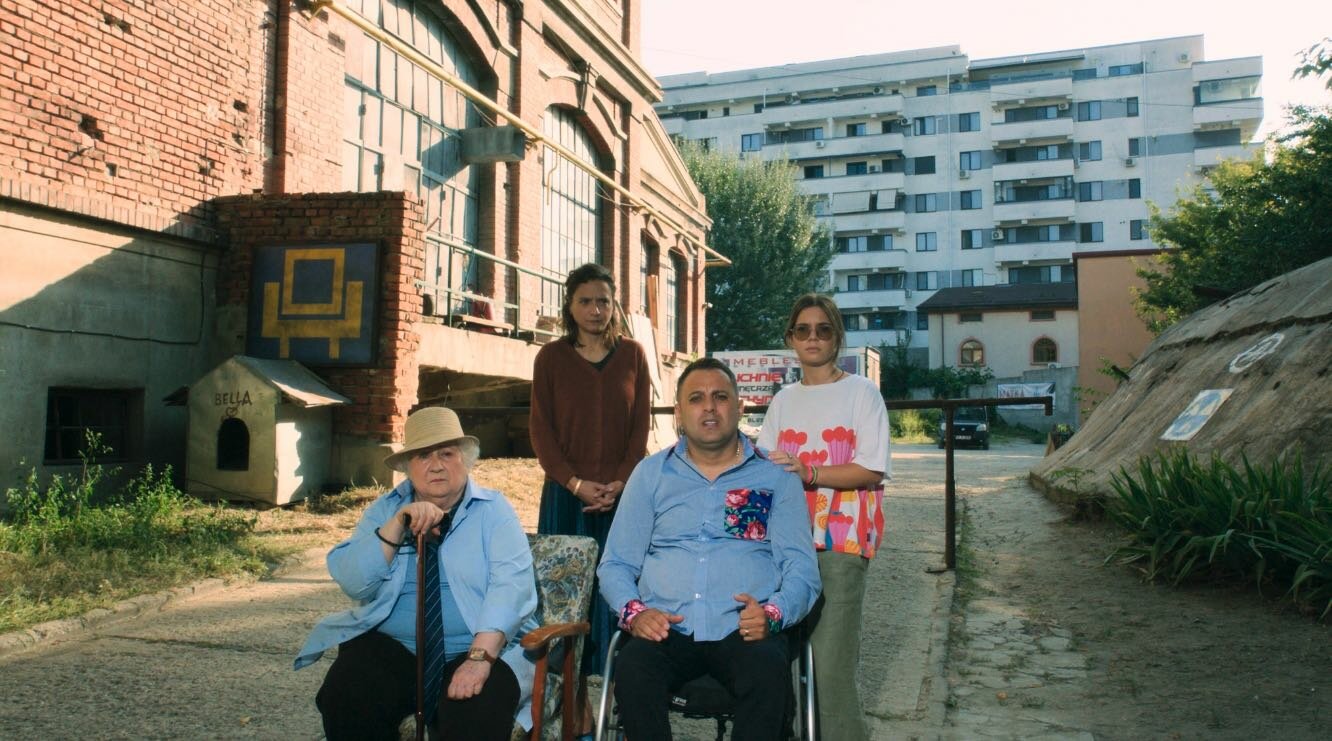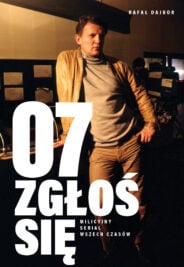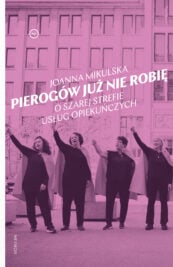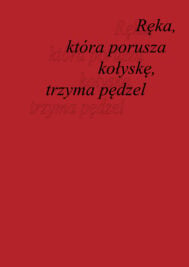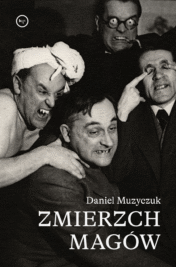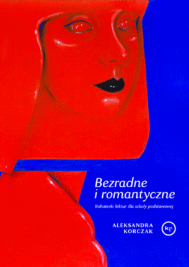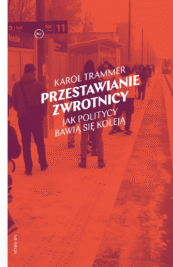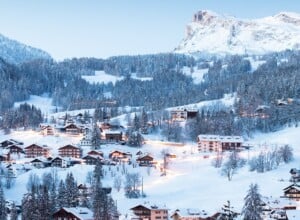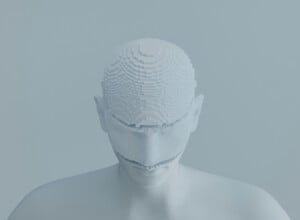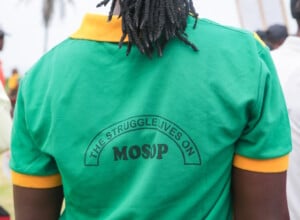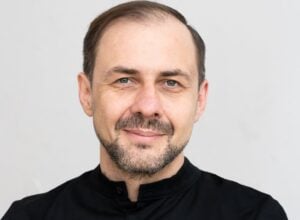Film Nie obiecujcie sobie zbyt wiele po końcu świata potwierdza to, co wiedzieliśmy już co najmniej od nagrodzonego Złotym Niedźwiedziem w Berlinie Niefortunnym numerku albo szalonym porno (2021): że jego reżyser i scenarzysta Radu Jude jest najbardziej oryginalnym w podejściu do filmowej formy, najbardziej zabawnym i jednym z najbardziej przenikliwych twórców współczesnego kina rumuńskiego.
Film z 2021 roku podzielony był na trzy wyraźnie stylistycznie odrębne od siebie części: pierwsza, utrzymana w poetyce typowej dla rumuńskiej nowej fali, przedstawiała problemy nauczycielki, której świat wali się po tym, jak taśma przedstawiająca nagranie jej zbliżenia z mężem trafia do sieci; w drugiej dostaliśmy esej filmowy przedstawiający wywód na temat historii podejścia do pornografii w rumuńskiej kulturze; w trzeciej obserwowaliśmy pokazaną w konwencji groteskowej komedii konfrontację bohaterki z oburzonymi rodzicami.
Nie obiecujcie sobie… ma podobnie strukturalnie przemyślaną konstrukcję. Pierwsza część przedstawia dzień z życia Angeli – asystentki produkcji z Bukaresztu. Jej historia montowana jest z fragmentami rumuńskiego filmu Angela idzie dalej Luciana Bratu z 1981 roku, stanowiącego komentarz i kontrapunkt do współczesnej historii. Druga to nakręcona w jednym, nieruchomym ujęciu scena z planu produkcji, przy której pracuje Angela. W tych ograniczonych ramach reżyserowi udało się zawrzeć niezwykłe bogactwo obserwacji, wątków i tematów, wszystko to podane z wielkim filmowym nerwem i humorem.
Kino wszystkożerne
Angela wstaje bladym świtem i kończy pracę późno w nocy. Większość dnia spędza w samochodzie, przemierzając ulice rumuńskiej stolicy. Jest ciągle przemęczona, zaspana, funkcjonuje dzięki kolejnym napojom energetycznym. W firmie jest osobą od wszystkiego. Nagrywa na telefon osoby przymierzane do roli w produkowanym dla niemieckiego klienta – firmę meblarską posiadającą fabrykę w Rumunii – filmie reklamowym, mającym przestrzegać przed wypadkami pracy i uwrażliwiać pracowników na konieczność przestrzegania przepisów BHP. Odbiera obiektywy z innego planu. Bierze udział w zoomie z niemiecką dyrektorką marketingu, którą później, w środku nocy odwozi z lotniska do hotelu. W międzyczasie znajduje jeszcze czas na szybkie seksualne zbliżenie w samochodzie z mężczyzną, z którym łączy ją jakiś rodzaj relacji.
W napisach końcowych wśród autorów fragmentów literackich wykorzystanych w dialogach pojawia się Slavoj Žižek, filozof, który tworzy swoją teorię, pochłaniając – jak szop na śmietniku – wszystko, co go otacza: Lacana i Hitchcocka, niemiecki idealizm i popkulturę, Hegla i współczesną politykę, Marksa i stare dowcipy z czasów komunistycznej Jugosławii. Podobną wszystkożerność obserwujemy w filmie Jude. Nowofalowa forma sąsiaduje z cameo Uwe Bolla, twórcy uważanego za jednego z najgorszych aktywnych dziś reżyserów. Boll opowiada o tym, jak wyzwał krytyków swoich filmów na pojedynek bokserski i w ringu poradził sobie znacznie lepiej niż na planie filmowym czy za stołem montażowym. Odniesienia do literackiej klasyki mieszają się z obscenicznym humorem. Angela wdaje się w dyskusję z niemiecką klientką o Goethem – Niemka jest, jak twierdzi, potomkinią pisarza – a jednocześnie nagrywa na Instagrama wulgarne filmiki, w których z nałożonym odpowiednim filtrem na twarz wciela się w Bobika – maczystowskiego mizogina, chwalącego się znajomością z Andrew Tate’em, seksualnymi wyczynami, bogactwem oraz swoim uwielbieniem dla Putina. Agresywna satyra miesza się z poważną społeczną diagnozą, korporacyjna nowomowa z teoriami spiskowymi z odległych zakątków internetu, a współczesny Bukareszt z tym lat 80., przywoływanym w archiwalnych fragmentach.
Między starym i nowym
Im dłużej trwa film, tym bardziej utwierdzamy się jako widzowie w przekonaniu, że ta wszystkożerność reżysera jest koniecznym estetycznym kluczem do tego, by przedstawić portretowaną przez niego rzeczywistość: Rumunię zawieszoną między dziedzictwem komunizmu a współczesnym zuberyzowanym kapitalizmem, między dawnym komunistycznym Wschodem a peryferiami Zachodu.
Bukareszt, stolica tego państwa, jawi się w filmie jako twór przytłaczający i potworny, miasto rozlane i zdziczałe, skolonizowane przez agresywną reklamę, dziką deweloperkę, poruszające się bez jakichkolwiek reguł samochody, nieudane modernizacyjne projekty z czasów komunizmu, jak gigantyczny, monumentalny Pałac Ludowy, trzeci co do wielkości budynek administracyjny na świecie. By zrobić dla niego miejsce, Ceaușescu wyburzył całą dzielnicę, widzimy ją jeszcze na ekranie we fragmentach filmu z 1981 roku.
Kapitalistyczna Rumunia potrafi obchodzić się z przestrzenią miejską w równie brutalny sposób – w jednej z najbardziej makabrycznie zabawnych scen filmu Angela, pomiędzy zadaniami w pracy, odwiedza dewelopera budującego osiedle luksusowych apartamentowców. Niestety, z powodu ogólnego bałaganu cmentarz, gdzie pochowana jest babka kobiety, zaczął stawiać nowe groby na działce należącej do dewelopera, tuż pod oknami nowej, prestiżowej inwestycji. Deweloper spokojnie tłumaczy, że przecież klienci z sektora premium nie mogą oglądać ze swoich przestronnych tarasów pogrzebów i starszych kobiet palących znicze, a poza tym to jego ziemia i groby zostaną z niej przeniesione. Wszystko jednak odbędzie zgodnie z prawem kanonicznym, bo jego firma współpracuje z odpowiednimi duchownymi, nie tylko prawosławnymi.
Jude zestawia regularnie obrazy podobnych absurdów rumuńskiego kapitalizmu z Rumunią czasów Ceaușescu, którą wprowadzają fragmenty filmu sprzed 40 lat. Jego bohaterką także jest Angela, również spędzająca większość czasu w samochodzie – pracuje jako taksówkarka. Tamten Bukareszt jest bez wątpienia spokojniejszy, mniej frenetyczny, miasto nie wygląda, jakby ciągle funkcjonowało na energetykach czy jakiś grubszych dopalaczach. A jednocześnie tamta rzeczywistość jest niezwykle zgrzebna – na ulicach widać prawie wyłącznie dacie tego samego modelu i kilka trabantów – dusząca i opresyjna. „Komunistyczna” Angela, tak jak współczesna, fatalnie zarabia, w „męskim” zawodzie spotyka się albo z codzienną mizoginią, albo z nagabywaniem klientów.
Oglądając film Jude, można odnieść wrażenie, że tak jak Rumunia dostała jeden z najgorszych wariantów realnego socjalizmu, tak teraz z całą pewnością nie dostała najlepszego wariantu kapitalizmu. Dzień z życia Angeli pozwala pokazać, jak sprekaryzowany i dziki jest rumuński kapitalizm, że w ramach Unii Europejskiej pozostaje na głęboko peryferyjnej pozycji. Rumuński przemysł filmowy zajmuje się podwykonawstwem dla zachodnich klientów, rumuński przemysł dla niemieckich firm, którym skorumpowana klasa polityczna pozwala robić w Rumunii rzeczy, jakie trudno byłoby robić w zachodniej Europie.
(Nie)prawda obrazu
Angela z filmu z początku lat 80. pojawia się w filmie Jude jako współczesna postać, matka jednego z potencjalnych bohaterów filmu produkowanego przez firmę „współczesnej” Angeli. Jej syn uległ wypadkowi w pracy fabryki mebli, miesiącami pozostawał w śpiączce, teraz jest sparaliżowany od pasa w dół.
Firma chce wykorzystać jego wypadek, by nakręcić film uświadamiający pracowników, by nosili w pracy kask. Mężczyzna uważa, że winny wypadkowi nie jest fakt, że nie nosił kasku, ale organizacja pracy – nadgodziny, brak oświetlenia placu przed fabryką, zardzewiała, niezmieniana od upadku komunizmu infrastruktura.
Druga część filmu pokazuje w jednym, nieruchomym ujęciu kręcenie reklamy społecznej z udziałem ofiary wypadku i jego rodziny. Spoza kadru słyszymy polecenia reżysera, uwagi producentów, głos Angeli. W tej statycznej scenie, gdzie pozornie nic się nie dzieje, doskonale udało się uchwycić to, jak działa przemoc symboliczna, strukturalna i ekonomiczna.
Mężczyzna godzi się wystąpić przed kamerą, bo liczy, że opowie swoją historię. Z każdym dublem dostaje jednak nowe instrukcje, odbierające mu głos i przykrawające narrację do wersji korzystnej dla niemieckiej firmy. Czuje się z tym wyraźnie źle, najchętniej wyjechałby swoim wózkiem z planu, ale potrzebuje pieniędzy, a za udział w filmie dostanie duże jak dla niego honorarium.
Technikę jednego ujęcia na ogół wiąże się z prawdą obrazu filmowego, bezpośrednio odbijającego rzeczywistość. Tu ta technika zostaje wykorzystana, by pokazać, jak obraz filmowy fabrykuje nieprawdę. W jakimś sensie na drugim biegunie znajdują się instagramowe filmy, nagrywane przez Angelę. Cyfrowo zmanipulowany obraz, umożliwiający ukrycie twarzy za maską filtru, oraz język powielający dyskurs mizoginiczno-populistyczno-prawicowo-spiskowego backlashu pozwalają dotknąć istotnej prawdy o rzeczywistości, nie tylko tej rumuńskiej.
Wszystkie nasze końce
Gdy mijają napisy końcowe, zastanawiamy się, o jakim właściwie końcu świata mówi tytuł filmu. Tych końców sugerowanych przez Jude jest kilka. Gdy Angela się budzi, jej telefon pokazuje wymowną datę: 11.09. A więc rocznicę dwóch końców świata, w których cieniu ciągle w mniejszym lub większym stopniu żyjemy: zamachu stanu Pinocheta, który przerwał socjalistyczny eksperyment w Chile, zaprowadzającego na lata wojskową dyktaturę, oraz zamachów z Nowego Jorku, kończących fukuyamowski sen o końcu historii i rozpoczynającą XXI wiek.
W rozmowach nieustannie wraca kontekst wojny w Ukrainie, wraz z którą skończył się świat, w jakim mogliśmy wierzyć, że przynajmniej w Europie – nawet na jej wschodnich, bliskich Rosji peryferiach – nie jest możliwa pełnoskalowa wojna i siłowa zmiana granic. W jakimś sensie rzeczywistość współczesnej Rumunii, zintegrowanej w peryferyjnej roli z Europą, z jej sprekaryzowanym, dość dzikim kapitalizmem, jest końcem rumuńskiej historii, zakończeniem drogi od komunizmu, celem, po osiągnięciu którego nie ma już za horyzontem przestrzeni inspirującej pragnienia i marzenia.
Najbardziej niezwykłą rzeczą we wszystkich tych apokalipsach – sugeruje nam film – jest to, jak ostatecznie są niespektakularne, jak łatwo ich efekty stają się częścią codziennej tkaniny rzeczywistości. Żyjemy w małej apokalipsie, sugeruje film, reżyser wydobywa z tego stanu maksimum smutnego, często podszytego autentycznym smutkiem absurdu – ale jednocześnie, jak sugeruje sam tytuł, nie oczekujmy zbyt wiele po tym fakcie. Inaczej niż w Nowym Testamencie apokalipsa nie ujawnia tu żadnych odwiecznych praw, nie zrywa zasłon i pieczęci, w gruncie rzeczy nie tak wiele zmienia.

 Wspieraj
Wspieraj 

 Wspieraj
Wspieraj  Wydawnictwo
Wydawnictwo 
 Zaloguj się
Zaloguj się 
